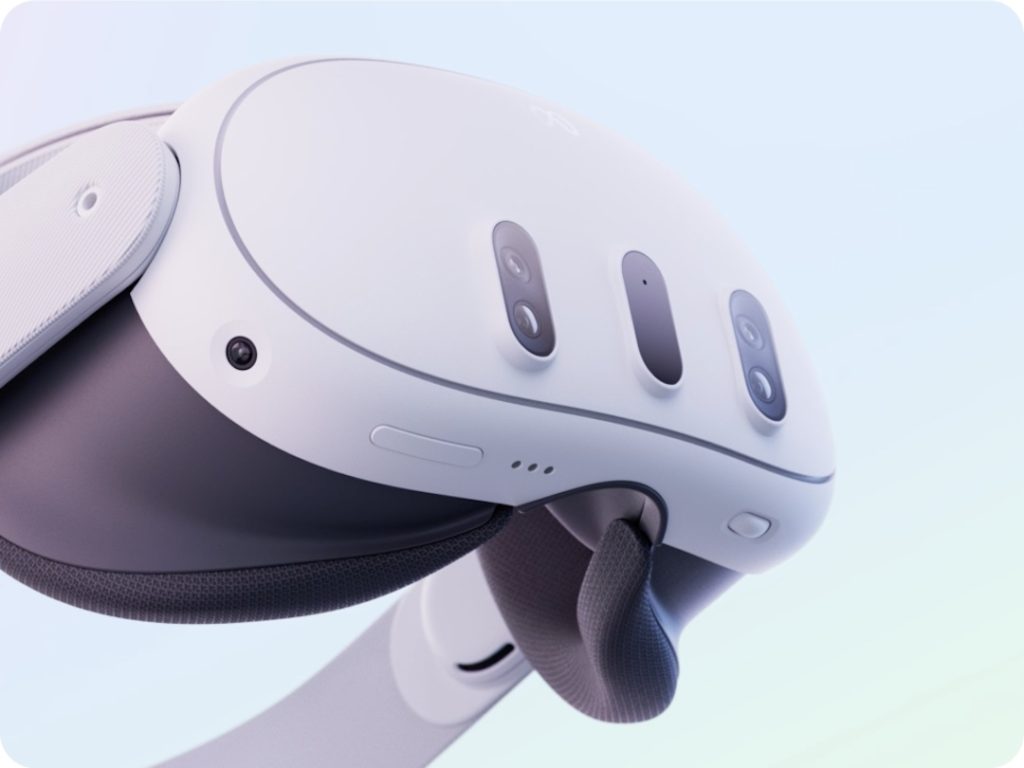The direct-to-consumer augmented reality and virtual reality industry has generated significant investment from leading tech companies including Meta, Sony, and Apple. However, the global AR hardware market has yet to return even a fraction of the money invested in it, which begs the question: Are AR and VR headsets worth garnering major focus from retailers?
According to Statista Market Insights, global AR hardware revenue is expected to reach only $3.2 billion in 2023. To put that figure into perspective against other major hardware segments in the CE space, in 2022, the global smart TV market generated an estimated revenue of $204.4 billion and the gaming console market accounted for $38.5 billion.
Meta’s Big Gamble
Meta is treating AR and VR technologies in tandem with the metaverse as the next frontier of consumer technology. Between 2019 and 2022, Meta poured $36 billion into its metaverse and VR division, Reality Labs, and only saw a return of roughly $5 billion in revenue, according to reporting from Business Insider.
Meta is far from the only company investing heavily in AR and VR solutions; it is estimated that Apple, which filed over 5,000 patents in developing the Apple Vision Pro headset, spent nearly $20 billion on the device, which retails for $3,499.
However, Meta’s willingness to accrue a $30.7 billion operating loss on Reality Labs over a three-year period suggests that the company views the segment as a long-term investment with little regard for short-term profitability.
Angie Gifford, VP of EMEA at Meta, confirmed this sentiment in a conversation with journalist Andrea Smith at IFA Berlin 2023, saying, “Technology, it takes time, and we see the metaverse in the next eight to 10 years. Point number one. Point number two is what are we working on? We’re working on software. We’re working on hardware, and we’re working on research.”
This bold strategy culminated in the company’s stock reaching a 5-year low of $88 per share back in November 2022 before seeing a steady resurgence over the past year back to $305 per share at the time of writing.
Meta is betting big that VR and AR hardware will be the key to unlocking the metaverse for consumers. “I think the key component of the metaverse is having the 2D experience that we have today and turning (it) into a 3D experience so you don’t feel you’re looking at the Internet,” continued Gifford, “You really have an immersive experience to be in the Internet.”
Meta’s vision for a fully immersive next-generation internet that will touch billions of people is— as of this moment— ambitious to say the least. However, one dynamic is certain, the AR and VR industry is in the midst of an exploratory boom, as companies ranging from automakers to the NHL experiment with use cases for the technology.
The Technology Behind the Meta Quest 3

In terms of hardware quality, AR and VR headsets have come a long way in just a few short years. For example, the Meta Quest 3, the company’s latest mainstream option that was released on October 10, is almost unrecognizable when compared to earlier generations of the product.
The Quest 3 boasts two LCD screens with a 2,064 × 2,208-pixel resolution per eye, compared to the Quest 2, which features a 1,832 × 1,920-pixel resolution per eye. Beyond sharper visuals, another major advancement is the presence of the Snapdragon XR2 Gen 2 chip, which can support a 2.5 times better graphic performance than the Snapdragon XR2 Gen 1, which is used in the Meta Quest 2.
What is Lacking
While hardware is steadily improving, the sector still faces plenty of hurdles. Consistent knocks on AR and VR headsets and part of the reason direct-to-consumer sales of headsets have yet to take off are twofold: bulkiness, and latency issues.
Latency issues are nothing new to the gaming world, but they are especially pronounced with AR and VR headsets. If you press a button on a console controller and your character jumps a split second later it is frustrating; however, if you jump with a VR headset on and your avatar is delayed in jumping it is downright disorienting.
According to Varjo, the meaningful latency threshold for VR and AR is around 20 milliseconds. This means that any delay above the 20-millisecond threshold is a perceptible nuisance to the user. Latency tests conducted on the Meta Quest 2 by Mixed, an XR news platform, found the delay to be quite perceptible at 54.8 milliseconds.
Latency is far from the only frustration for consumers. The most popular VR headsets weigh roughly 1.5 pounds on average, and while this might not sound like much it can lead to significant discomfort over long sessions.
Takeaway

At the moment, sentiment towards VR and AR devices isn’t “gotta have it” as much as it is “that’s nifty,” a dynamic that makes the segment as much a marketing tool as it does next-generation technology. And, until consumers see the value or need in using a headset in their daily lives, the direct-to-consumer aspect of the market is likely to struggle, which is why, as we have previously reported, most consumers are likely to have their first experience with AR and VR headsets in a work setting.
The future for AR and VR is murky and the timetable behind mass adoption of these technologies is unclear but I wouldn’t bet against the sector. At the end of the day, given all the money invested, it is “too big to fail.”















